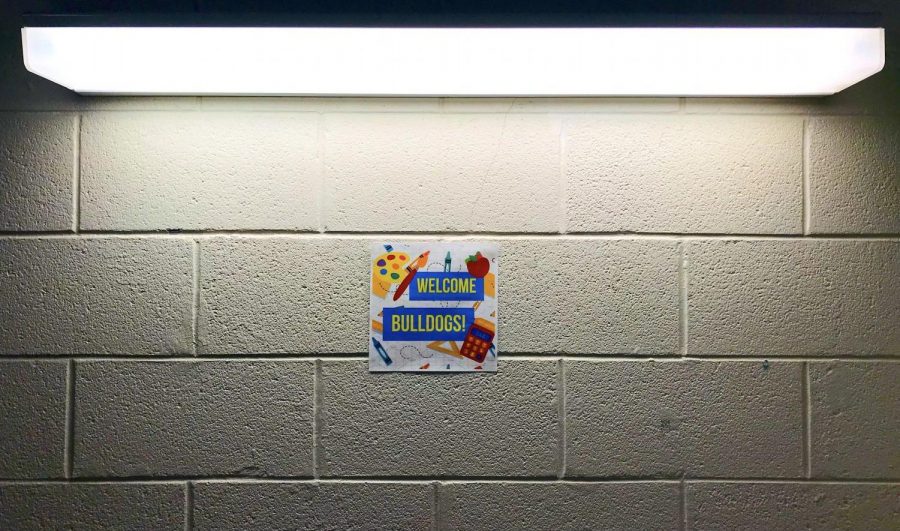Chamblee Weighs in on Return to School
Teachers forced to return following unapproved ADA accomodations—others continue to adapt.
March 19, 2021
The time has finally come for Chamblee students to bid their virtual workspaces and unreliable internet connections goodbye, as they prepare for the long-awaited and frequently postponed return to school. These students, who are returning to school for the hybrid learning model, will be able to enjoy the benefits of an in-person schooling environment, including a restored sense of normalcy and limited interactions with their peers and teachers.
Several teachers, however, are not as excited as their students to return to the school building, as it is more of an obligation for them than a choice.
ADA Paperwork
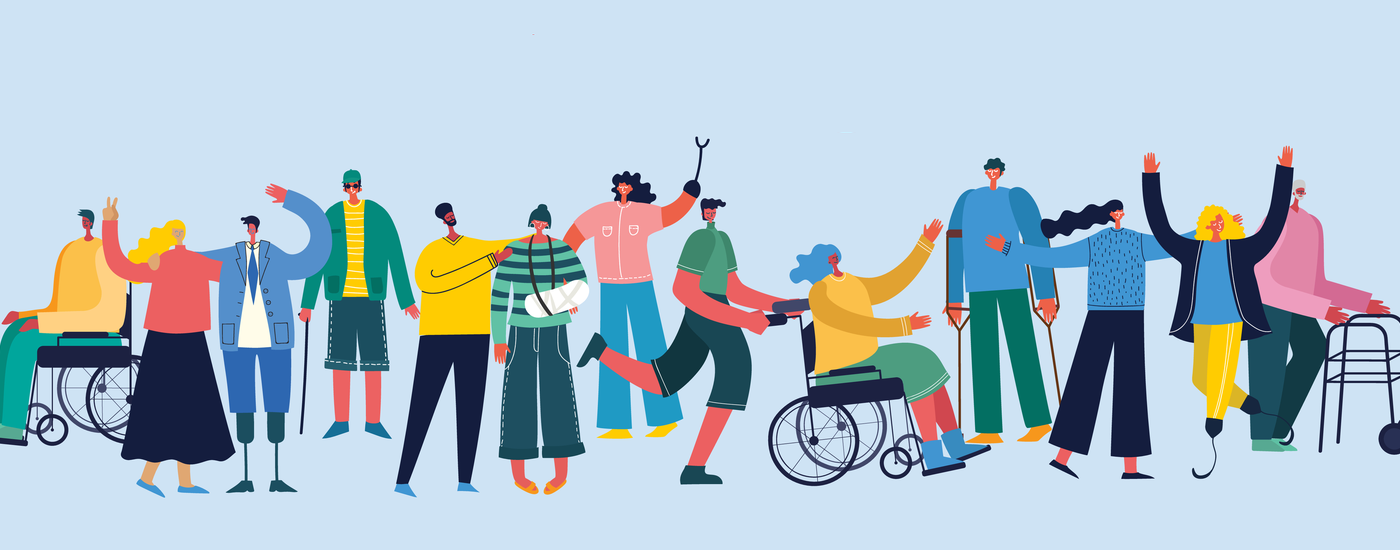
“I am returning to the school because I was not given a choice,” said math teacher Irvin Wardlow. “My [Americans with Disabilities Act] paperwork was never reviewed, so I do feel that DeKalb County Schools was less than honest with me about their concern for my safety.”
Physics teacher Marie Cabrices’s health condition has put her in a comparable situation.
“My health condition means I have a weakened immune system,” said Cabrices. “My doctor has stated I cannot return to face-to-face instruction with students. Even if fully vaccinated, I am not safe until others are vaccinated. My only options were to take medical leave or retire. […] I don’t want to leave my students without finishing what I started with them this year, so I will do my best to make this situation work. I am still hopeful that the DeKalb County School District will review my ADA request and grant my request.”
The 1990 Americans with Disabilities Act (ADA) prohibits the discrimination of disabled individuals in all public aspects of life, such as schools, jobs, transportation, and places open to the public. Title I of the ADA prohibits private and public employers from discriminating against qualified disabled individuals in job application procedures and other standard privileges of employment.
Teachers who do not have a medical disability but are still uncomfortable returning to school may request hardship which, if approved, will postpone their return.
While receiving hardship is simple, it does not guarantee an extended leave. Therefore, teachers who qualify under the ADA may go through the lengthy process to fill out an additional application.
“Hardship was easy; everyone that asked got that,” said Cabrices. “My ADA request was a lengthy form my doctor had to fill out, and I [had to] email my portion and the doctor’s portion to the county office. I have heard only that it is being reviewed. I received that email on February 28 from an email I sent on February 1st. The process of waiting has been difficult, but I feel hopeful that I will be able to work within the school to keep myself safe until they review my request.”
Wardlow also went through the procedures to obtain an ADA-approved leave, though he has yet to receive any updates.
“The process involved two documents, one that I filled out and one that my physician filled out. I then submitted them electronically in mid-October,” said Wardlow. “I filled out ADA paperwork since I have a pacemaker. I followed up several times with the department concerned and received automatic replies that my application would be considered in the order it was received. Clearly, this was not the case.”
[Editor’s note: DeKalb County was contacted for comment, but no response was received.]
Teachers in the Building
On the other hand, teachers like math teacher Mallory Clark are delighted to be back at school, away from the distractions of home.
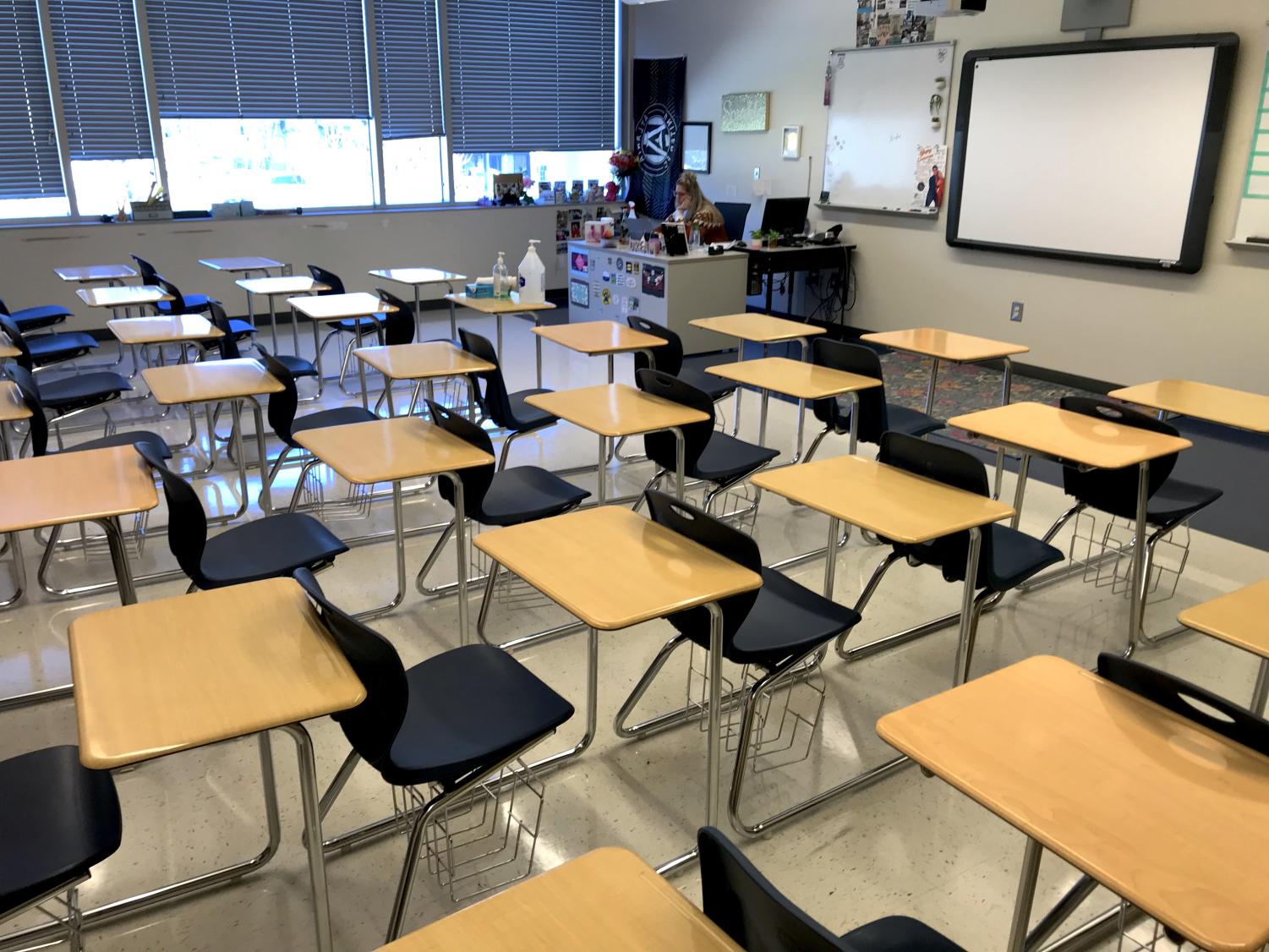
“I am very happy to see students again!” said Clark. “There are so many parts to teaching that I love and some that I don’t love so much, and virtual learning just felt like it was full of all the things I don’t care for in teaching. [Also], for me personally, I have three kids at home trying to do work virtually and one in preschool. My husband goes into the office every day and it was just a lot for me to handle. So, I am glad to be back because I have somewhat of a boundary now between work and home.”
Recently, Clark received the first dose of her COVID vaccine. This facilitated her transition from home to school.
“I was able to get vaccinated just yesterday,” said Clark. “I had to drive all the way to Newnan, Georgia to get it, but it was worth it. I registered on Kroger’s website and had to keep refreshing to find a time that worked, which was annoying, but overall, not that bad. My arm was a little sore, but I didn’t have any other side effects.”
Getting vaccinated was especially important for the safety of Clark’s parents.
“To be honest, I wasn’t that worried about myself, everyone in my family is very healthy,” said Clark. “I was, however, worried about my parents; they take care of my kids after school and my dad takes and picks my youngest child up from preschool every day. So, I became much more relaxed about returning [to school] once they were vaccinated.”
For those wondering how the hybrid learning model will operate once students are back in the classroom, Cabrices provides further details.
“Students will attend class virtually or in person and they will be taught at the same time,” said Cabrices. “There will be a lot of cleaning that teachers will need to do between classes. Teachers will have a headset on so that students online can hear them and students in the room as well. A number of teachers have plastic barriers set up around their desks to protect themselves. Everyone will wear a mask at all times. Bathrooms will be closed for the first five minutes and the last five minutes of class for cleaning. Water fountains are not available, so bring water.”
Wardlow does not plan to make many changes to his teaching style in order to maintain adequate safety measures.
“The truth is, I will still be teaching virtually to students at home and in the classroom,” said Wardlow. “I have hung a clear shower curtain around my desk, and I will stay behind it with double masks while students are in my room. The one difference will be, I hope, that students who come back to school will find it easier to focus and complete their schoolwork.”
Clark has also arranged for her in-person and virtual students to continue learning in a similar manner.
“With the technology that we currently have, I’d say I will probably be standing at my Promethean board with my camera facing me as opposed to sitting behind my desk,” said Clark. “My students will continue to take notes in a similar fashion, and I will still use [online teaching platforms like] Pear Deck and Go Formative to assess my students in real-time.”
Only time will tell whether the current plan will prove to be effective in sustaining the return of all students and teachers. For now, everyone will continue to adhere to the guidelines set in place to make this transition as smooth as possible.
“Mrs. Barnes and the administrative team have worked extremely hard trying to make us all as safe as possible,” said Clark. “We are going to stick to our Blue and Gold days for the remainder of the semester to reduce the number of times students switch classes. I truly believe that if students and faculty wear their masks appropriately, wash their hands, and social distance, we can make it to May with few incidents.”
In-Person Classes Begin
On March 15, 2021, students who chose to return to school entered the CCHS school building. For this first day, however, only a certain cohort of students with last names A-L could enter. The second cohort, last names M-Z, would come to the building on Thursday and Friday of that same week.
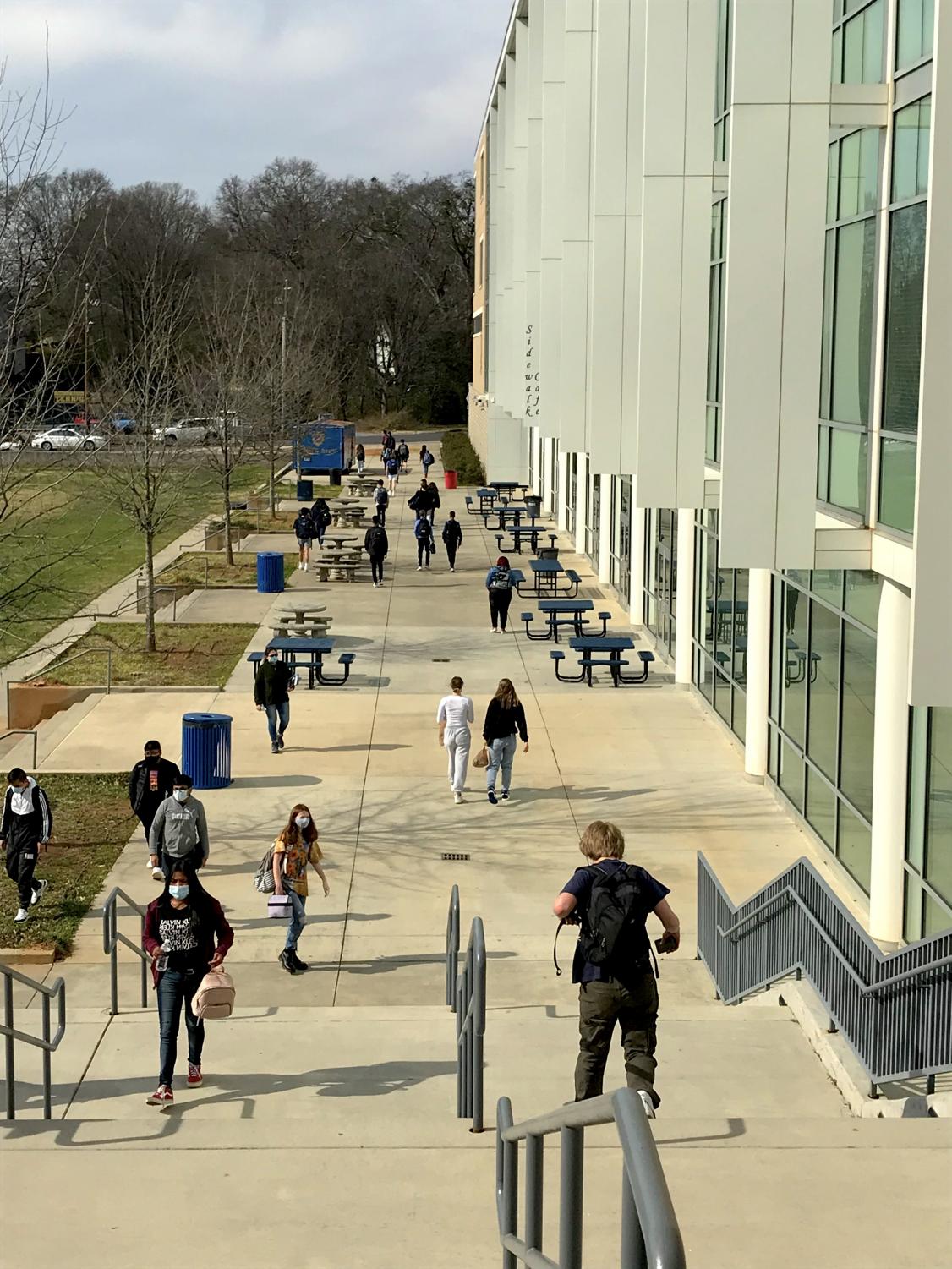
Jasmine Lawrence (‘22) returned to school on Monday and found the experience to be unlike what she was accustomed to.
“[Going back to school] was so mentally tiring because I’ve been so used to just relaxing at home while in class. I actually had to, like, pay attention and participate in class,” said Lawrence.
Wardlow agreed that students and teachers are still getting acclimated to the transition—especially the long hours seated at a computer.
“On the days I have three classes, I have one 30-minute break where I can take my mask off and eat lunch,” said Wardlow. “Many other teachers have this same situation, and it is an endurance test. It is hard to sit in front of the computer all day long, and I know the students feel the same way.”
Even the students learning in-person could not escape virtual learning as both virtual and in-person students were subject to the same instructional format.
“Most teachers had the call on their computer, set up in front of a whiteboard or the Promethean board, and did class like that. Others just had everyone join the call and did class like normal,” said Lawrence.
Wardlow found the continued virtual format to be beneficial.
“I have decided to continue the virtual model with all students,” said Wardlow. “I have automated my courses so that all my students have videos to access, and when they get problems wrong, they can see worked-out solutions. I am still very busy entering grades, posting lesson plans, practicing the curriculum, and attending many meetings. But, since I have many procedures automated, I know I can maintain a consistent pace for the rest of the year and not burn out from trying to grade everything by hand and differentiating between in person and virtual.”
During the transition, safety was important to consider. Thankfully, many CCHS students and staff felt safe while in the building because of the measures put in place.
“We had to scan in whenever we were entering or leaving a classroom,” said Jamie King (‘22). “Desks were spread apart, and we were also allowed to eat lunch outside.”
Despite his initial apprehensions, Wardlow’s own safety efforts kept his environment secure for the time being.
“I don’t feel unsafe as of now,” said Wardlow. “With my shower curtain surrounding my desk, my double mask, and the fact that I have received my first shot of [the Moderna vaccine], I feel protected.”
Nonetheless, if the number of students in the building was to increase, the situation would be much different.
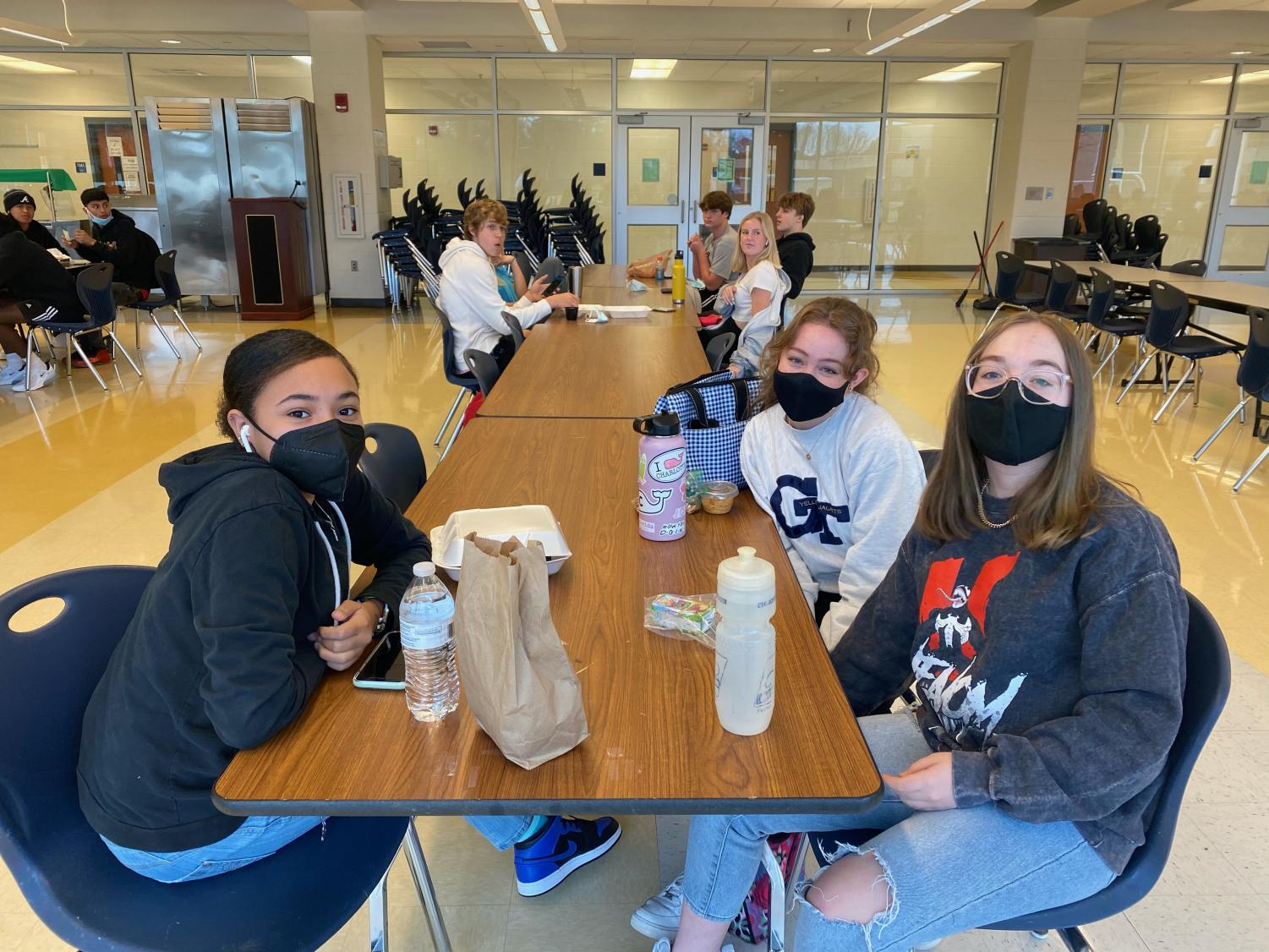
“If we had a big increase in students coming back, I would not feel as safe,” said Wardlow. “Right now, with every other desk not occupied, students are approximately three feet apart. If most students came back, then most mitigation strategies would not work since many classes exceed 30 students, our school is still having major ventilation problems, and we would most likely run out of cleaning supplies such as soap and paper towels. So, much of the public is probably not aware that while we are accepting students back, we really need most students to stay virtual.”

